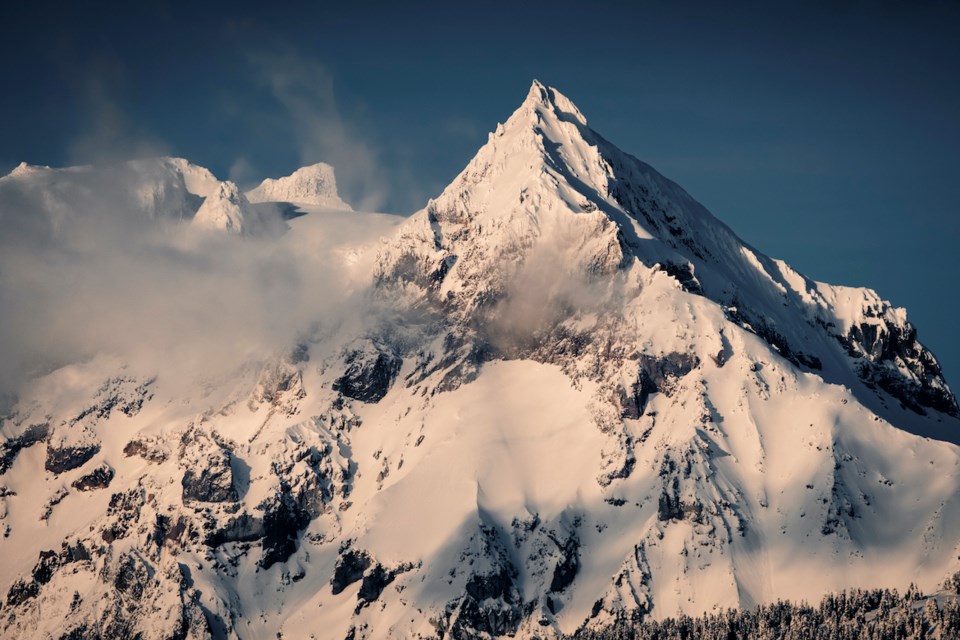In the Sea to Sky Corridor, seeing their language and familiar names on street signs, buildings, schools, mountains, and other landmarks has long been commonplace for settlers and their children.
The same has not always been the case for Sḵwx̱wú7mesh Sníchim (Squamish language) speakers.
Sḵwx̱wú7mesh Úxwumixw (Squamish Nation) councillor and spokesperson Sxwíxwtn Wilson Williams highlights the importance of reclaiming Sḵwx̱wú7mesh names and naming new facilities in conjunction with Sḵwx̱wú7mesh people.
“I just think of it as building that mutual respect, but having that open heart and mind ... outside the Squamish Nation community where there is this reconciliation occurring,” he said, adding there is a movement underway to revitalize the Squamish language.
“I think we’re at a good crossroads right now where it’s about to really spill over,” he said.
“We have a rigorous life journey we’re imposing on our youth and children, where they’re going to grow up with their language. And I think that’s a huge part of it on our end.”
The Sḵwx̱wú7mesh people have been in this area from time immemorial, Williams noted.
Using the original names for things connects people with the history of the land, he said.
“It really is going to revitalize what the area was used for,” he said.
Williams referenced his ancestral name, Sxwíxwtn, which comes from Yekw’ápsem where his family on his father’s side lived for many years. It is up in the Squamish Valley by the railway tracks and the Squamish River.
“And the name is actually directly connected to the land. So if you were to talk to some of our ancestors, and they would hear my name, they would understand where it was coming from,” he said.
Wilson said that young Nation members feel empowered to learn their history.
Elders say, “You don’t know who you are unless you find out where you come from,” Wilson said.
Building relationships between Indigenous and non-Indigenous folks is a way of fostering truth and reconciliation, Wilson said.
Reclaiming or naming buildings, schools, landmarks with Indigenous names is part of building a bridge between peoples.
Wilson cited the relationship between the Musqueam, Squamish, and Tsleil-Waututh Nations and the Vancouver Parks Board, with the board looking to identify traditional place names and rename parks.
This past summer, a new Vancouver park was the first to be named in both the hən̓q̓əmin̓əm̓ and Sḵwx̱wú7mesh languages. (sθәqәlxenәm ts’exwts’áxwi7, meaning ‘rainbow’).
“It revitalizes the whole history of the land and the connection, not only that Indigenous people have, but it gives that education and history and context to people who live in the area now,” he said.
In the corridor, he said that reclaiming the name Nch’kay (Mount Garibaldi) would connect the mountain to its history and the Sḵwx̱wú7mesh legends.
“And how our people... survived through the Great Flood by going up top of Mount Garibaldi and, I mean, these are the kinds of legends as well that are connected to place names,” he said, adding knowing the place names can inform folks on where foods used to be harvested, for example.
“When we share these stories, a lot of this history is not only just part of reconciliation for our neighbours in the external communities. It’s a big revitalization for our Indigenous community as well. We’re actually bringing these stories out and having that pride to come out and not [be] scared anymore to practice our culture, our traditions. To say, our language. Residential schools took that away from us. And you can see part of reconciliation ... the core foundation of it is building that pride back to say, ‘Hey, I want to learn our language. I want to learn our ceremony and our practices, and live our ways, how we did before.’”
Wilson said his own parents, survivors of residential school, were hesitant to share their culture or to speak their language when he was growing up, something he didn’t understand until he was a young man when he learned about residential school.
“That’s flipped now where it’s night and day pretty much. I’m so proud to be where I’m from, but also proud to take part in ceremony and continue on my path in speaking of Skwxwú7mesh sníchim, and especially the place names.”



